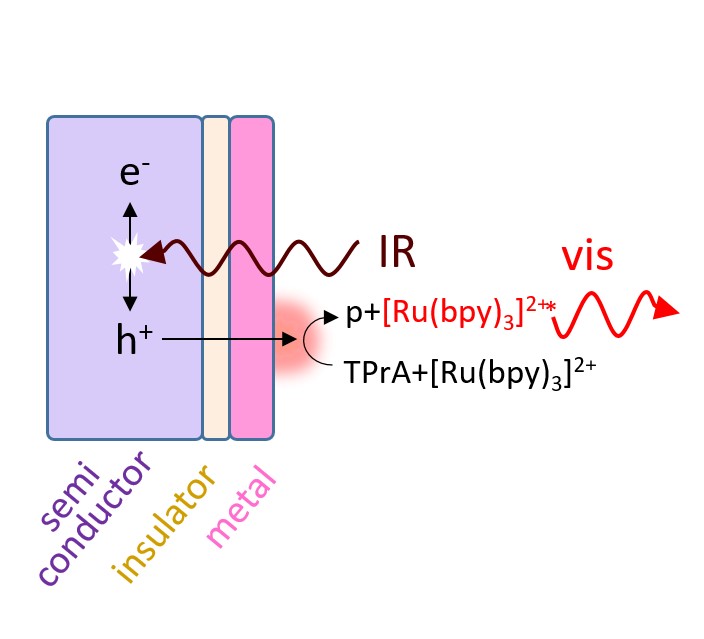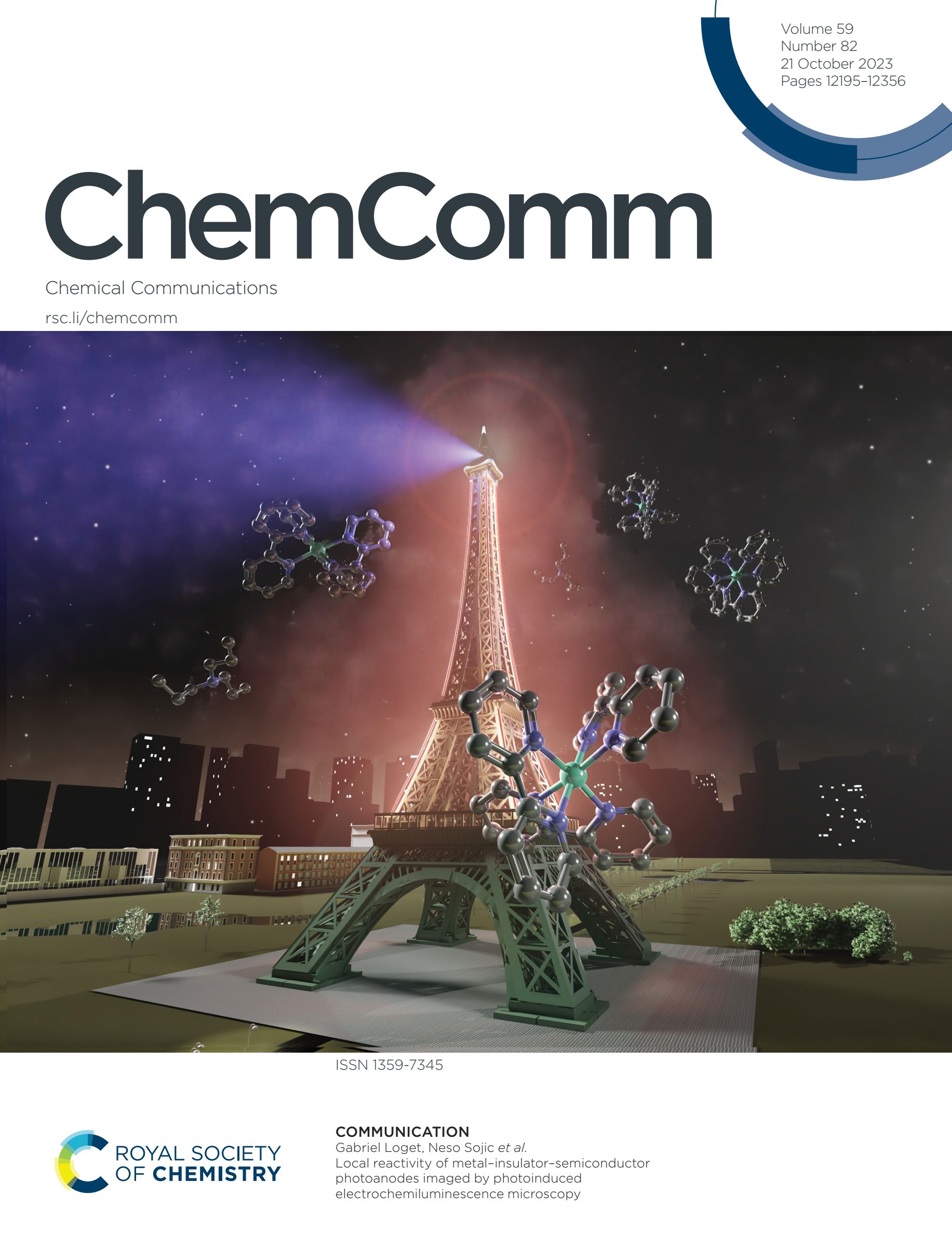Y. Zhao, J. Descamps, S. Ababou-Girard, J.-F. Bergamini, L. Santinacci, Y. Léger, N. Sojic, G. Loget
Angew. Chem. Int. Ed., 61, 2022,DOI: 10.1002/anie.202201865
Photoinduced electrochemiluminescence (PECL) allows the electrochemically assisted conversion of low-energy photons into high-energy photons at an electrode surface. This concept is expected to have important implications, however, it is dramatically limited by the stability of the surface, impeding future developments. Here, a series of metal-insulator-semiconductor junctions, using photoactive n-type Si (n-Si) as a light absorber covered by a few-nanometer-thick protective SiOx/metal (SiOx/M, with M = Ru, Pt, and Ir) overlayers are investigated for upconversion PECL of the model co-reactant system involving the simultaneous oxidation of tris(bipyridine)ruthenium(II) and tri-n-propylamine. We show that n-Si/SiOx/Pt and n-Si/SiOx/Ir exhibit high photovoltages and record stabilities in operation (35 h for n-Si/SiOx/Ir) for the generation of intense PECL with an anti-Stokes shift of 218 nm. We also demonstrate that these surfaces can be employed for spatially localized PECL. These unprecedented performances are extremely promising for future applications of PECL.







